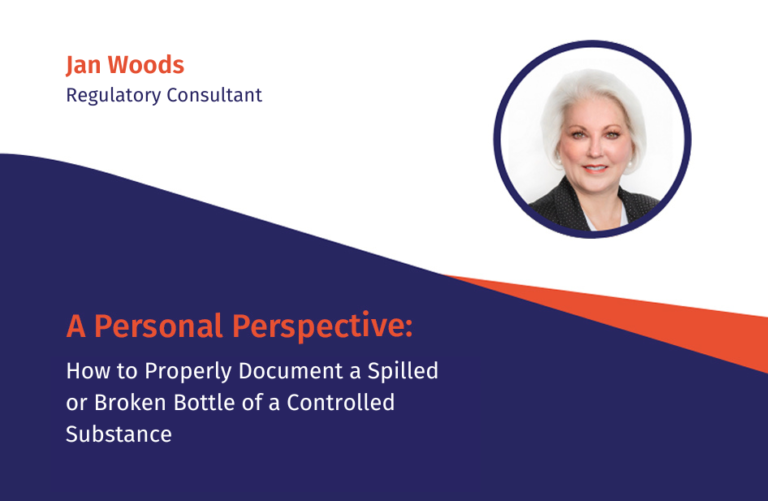The following blog is written by Epicur Pharma’s Advisory Council member Jan Woods, a veterinary hospital consultant, and national speaker with expertise in DEA compliance, state and federal regulations, and clinic and hospital practice management.
Below, Jan outlines how to properly manage a spilled or broken bottle.
Have you ever broken or spilled a bottle of a controlled substance? If so, did you document it? Correctly, according to the Drug Enforcement Administration (DEA) regulations?
Answering no to either of those documentation questions could mean your practice is at risk. The stocking of controlled substances in veterinary practices offers several benefits to patient care, but it also means veterinarians and staff must stay up to date on proper documentation, handling, storage, and disposal methods to ensure the practice remains compliant.
Mistakes happen – bottles spill or break. Keep these small messes from turning into larger ones by improving your compliance with DEA regulations!
5 Reminders for Properly Documenting a Spilled or Broken Bottle of a Controlled Substance
- A spill or breakage does not constitute a loss because the registrant can account for the controlled substance.
- A spill or break does not require notification to the DEA, per 70 FR 47096and 68 FR 40578. However, the DEA specifically states that the registrant “should continue to employ common sense, good faith approaches to their reporting, and recordkeeping obligations in the case of breakage and spillage.”
- The person who spilled or broke the bottle and a witness (2 people total) must immediately date and log the spill or break in your controlled substance reconciliation log, by schedule and list the reason for the break or spill. For example a bottle accidentally broke or spilled/unintentional loss.
- Dispose of the controlled substance spill or break according to controlled substance medical waste regulations.
- Fill out a DEA Form 41 completely, using the same reason for the break or spill as written in your controlled substance reconciliation log. For example, a bottle accidentally broke or spilled/unintentional loss. Keep the break or spill on file with your controlled substance recordkeeping. *Reminder* your state regulations may differ from the DEA’s
If you need any type of controlled substance guidance, logs, forms, pre or post-audit, or a controlled substance policy, you can find more at askjanforhelp.com.
Thanks for the insights, Jan! Want to hear more from Jan? Check out our previous blog from her about helping veterinary practices better understand the value of 503B manufacturers.
More to Read

Smooth Delivery: A Novel Extended-Release Buprenorphine in Laboratory Animals
This webinar highlighted the importance of analgesia and pain management in laboratory rodents with a focus on a novel injectable buprenorphine extended-release analgesic. Watch Now

Controlled Substances 101: How & Why You Must Comply! Parts 1 and 2
December 8 | 7 p.m. ET RACE-Approved CE Credit Hours: 2Free to attend Attendees will learn how to improve security, prevent theft per DEA regulations and proactively prepare for a DEA audit and best practice time saving suggestions from a previous veterinary practice owner, consultant & public speaker/educator, who has worked with Veterinarians cited by the DEA. Save My Seat

PPID Part 2: Management of PPID, Pergolide and Beyond!
April 8 | 7 p.m. ET RACE-Approved CE Credit Hours: 1Free to attend PPID webinar series part 2 will consider the pharmaceutical and non-pharmaceutical options for the management of pituitary pars intermedia dysfunction, including nutrition of the geriatric horse and new compounds available. Save My Seat


